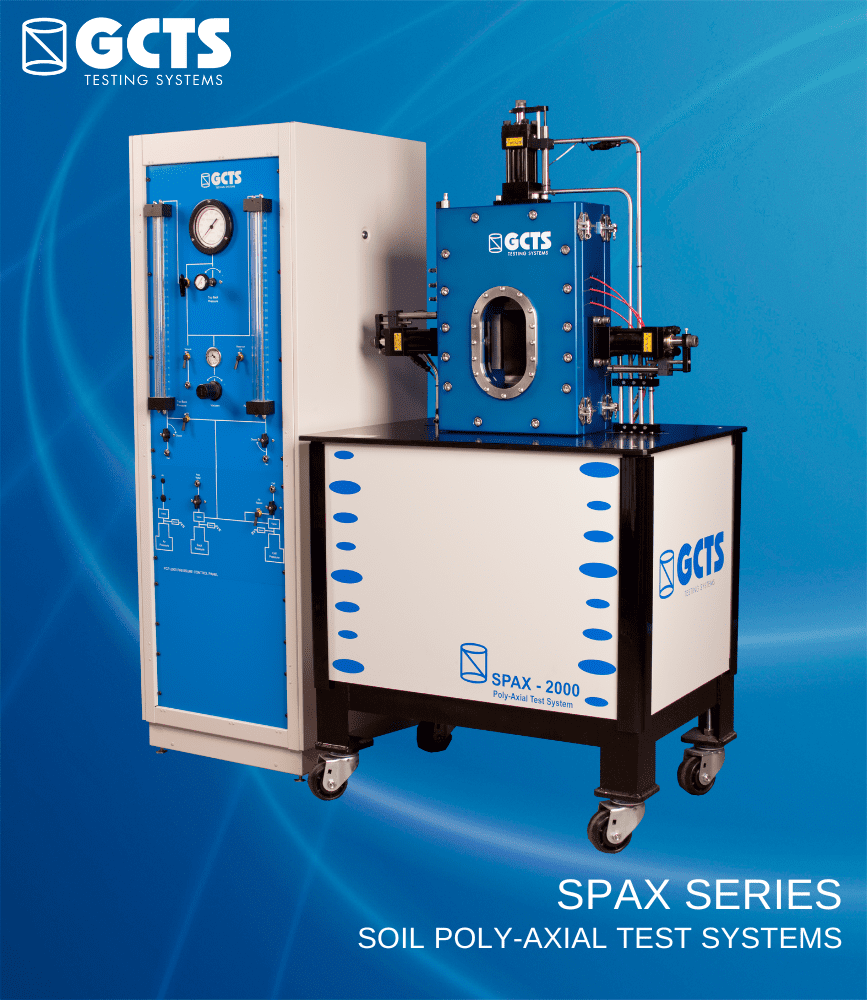Soil True Triaxial (Polyaxial)
The GCTS Poly-Axial Testing System (SPAX-2000) includes four hydraulic load rams, each equipped with LVDT´s for independent computer control of each platen. Stress or strain can be used as the feedback control. With this configuration, the specimen can remain centered, minimizing end platen friction. This is accomplished by controlling the deformation rate of one LVDT on each plane and forcing the opposing LVDT on each plane to mimic the deformation rate of the controlled LVDT. Each of the horizontal loading rams has an internal load cell due to the possibility of end platen friction at the top and bottom porous stones, which is more likely if the specimen exhibits significant non-homogeneity. The load cell on the bottom vertical loading is omitted because the side platens are smooth and can be lubricated, making end platen friction a small issue for this direction. Pore pressures are measured at the top and bottom specimen ends.
Stresses and strains in the third direction are applied through chamber fluid pressure. A volume change device is used to measure and control the strains in this direction. Optional proximity sensors can also be used to measure deformations in this direction.
SPAX-2000
HIGHLIGHTS
- 5 MPa maximum major principal stress
- 2 MPa maximum minor principal stress
- 75 mm x 75 mm x 150 mm maximum specimen size
- 6 feed-through ports for internal instrumentation
- Independent stress or strain closed-loop digital servo control of each of the three axes
- Front and back hinged doors swing open for easy specimen access
- Internal load cells are rigidly attached to upper and side loading platens
- Especially well-suited for K0 and plane strain testing
- Complete “turn key” system
- Can also perform true triaxial test on unsaturated soils





